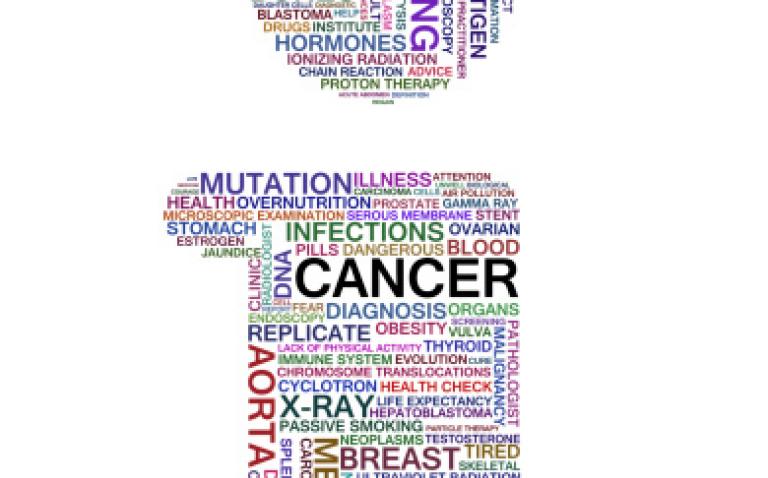Three out of four people are not aware that dense breast tissue increases a woman’s risk of developing breast cancer, (1,2) according to a new global study from GE Healthcare exploring perspectives on breast cancer with an emphasis on understanding awareness around dense breast tissue and the most common symptoms of breast cancer.
The “Value of Knowing” global survey of 10,000 adults across 10 countries highlighted a significant lack of awareness about the breast cancer risk associated with having dense breast tissue. Women with dense breast tissue have four to five times higher risk of developing breast cancer, yet only one out of five people globally has seen, heard or read about dense breast tissue in the last six months. Further, less than half of adults are confident in naming some of the most common signs and symptoms of breast cancer.
“If a woman learns that she has dense breasts, it is important for her to talk with her healthcare provider about her risk and options for further imaging or management,” said Susan Brown, managing director of Health and Science Education for Susan G. Komen®, the world’s largest breast cancer organisation. “Actions like the pending national legislation in the United States that requires doctors to inform their patients if they have dense breasts – and the related risks – will assist in the process of continuing to educate and empower women about their breast health.”
Dense breast tissue: an important risk factor for breast cancer and not as widely understood
Breast tissue is comprised of fat and connective tissue. Some women have more fat than connective tissue, while others have more connective tissue than fat. Dense breast tissue, which is common and found in 40% of women, is comprised of less fat and more connective tissue.
“The results of this research highlight an opportunity to further encourage awareness of dense breast tissue and empower women to take an active role in their breast health,” said Dr. Jessie Jacob, Chief Medical Officer of Breast Health, GE Healthcare. “Although the importance of breast cancer screening is well-known, this survey suggests that dense breast tissue, a relevant risk factor, is not widely understood.”
US, UK, and Japan among least aware of dense breast risk factor: China and Russia more aware
Interestingly, those respondents in the United States, United Kingdom, Australia and Japan were least aware of any links between dense breast tissue and increased breast cancer risk (19%, 9%, 13%, and 2%, respectively). Respondents in Indonesia, Russia and China were much more aware of a link between breast cancer and dense breast tissue (58%, 60% and 34%, respectively), and of those countries, Russia and China had the highest awareness of dense breast tissue actually increasing one’s risk for developing breast cancer. Additionally, the data in the GE Healthcare study also showed respondents in China, Russia, and Indonesia ranked the highest in having seen media coverage of dense breast tissue in the past six months (37%, 32%, and 44%, respectively). Furthermore, Japan, the US, UK and Australia cited very low levels of media attention over the same time period about the risks of dense breast tissue.
Over 50% of respondents can’t name the six common symptoms of breast cancer
The research also probed respondents’ recognition of common breast cancer symptoms. While a majority recognised a lump in the breast (71%) or a lump in the armpit (61%) as symptoms, less than half of those surveyed were able to identify other very common symptoms, including breast discharge; or changes to breast or nipple such as skin dimpling and rash. “As we continue to make progress in general breast cancer awareness, it is always critical to reinforce basic information about the disease,” said Dr. Connie Lehman, Professor and Vice Chair and Section Chief of Breast Imaging, University of Washington Dept. of Radiology. “Understanding the symptoms of breast cancer is critical to supporting early detection of the disease.”
Screening better understood in disease detection, but not as well understood in identifying dense breast tissue
More than half of those surveyed correctly understand that dense breast tissue can be identified through a routine mammogram. That said, nearly half also incorrectly believe that dense breast tissue can be identified through regular self-exams for lumps and irregularities. “Of women who are aware of dense breast tissue, there is still confusion regarding supplemental screening,” said Dr. Jacob. “We believe that more education is needed around dense breast tissue and other risk factors so that women can have more informed discussions with their physicians about their individual risk profile and the management of their health.”
“Since both dense breast tissue and cancers can appear white on a mammogram, a cancer can be hidden by dense breast tissue,” said Dr. Connie Lehman, Professor and Vice Chair and Section Chief of Breast Imaging, University of Washington Dept. of Radiology. “We know modern digital mammography performs better in women with dense breast tissue compared to older methods of mammography. Important research is being done to determine if other technologies such as tomosynthesis, ultrasound, or MRI may be beneficial to select groups of women.”
GE Healthcare’s global study is in support of Breast Cancer Awareness Month (BCAM), an annual international health campaign organised by major breast cancer charities every October to increase awareness of the disease and to raise funds for research into its cause, prevention, diagnosis, treatment and cure. The campaign also offers information and support to those affected by breast cancer.
References:
- Boyd NF, Guo H, Martin LJ, et al. Mammographic density and the risk and detection of breast cancer. N Engl J Med. 356(3):227-36, 2007. – See more at: http://ww5.komen.org/BreastCancer/LowerYourRiskReferences.html#sthash.yIrZCStn.dpuf
- Yaghjyan L, Colditz GA, Collins LC, et al. Mammographic breast density and subsequent risk of breast cancer in postmenopausal women according to tumor characteristics. J Natl Cancer Inst. 103(15):1179-89, 2011. – See more at: http://ww5.komen.org/BreastCancer/LowerYourRiskReferences.html#sthash.yIrZCStn.dpuf










